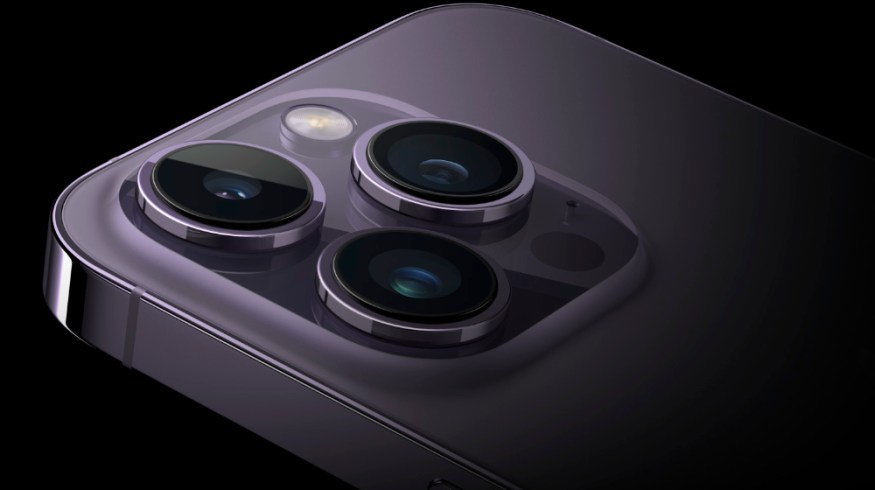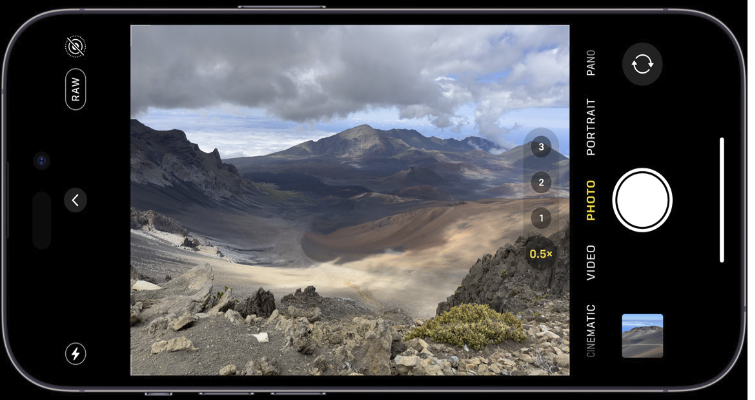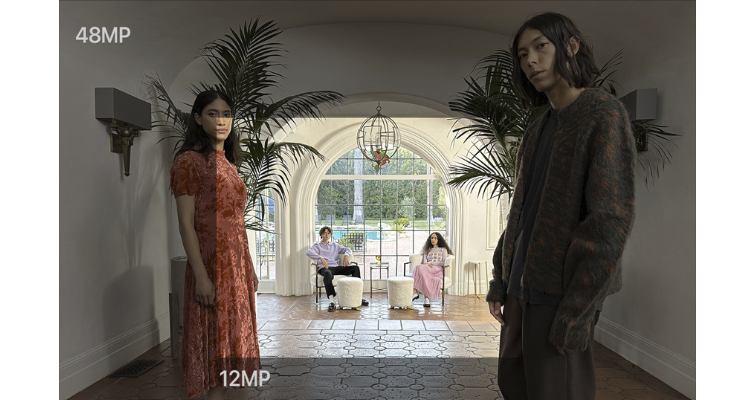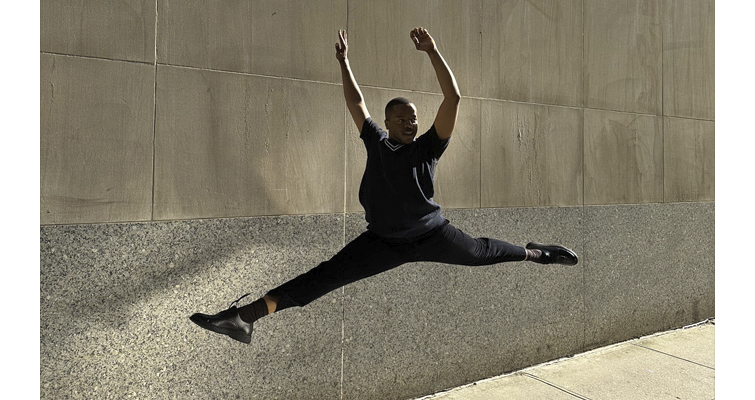
Apple’s iPhone 14 Camera Adds 48MP and Second Gen Sensor Shift
Apple continues disrupting the camera space with their branch of computational photography. Does the iPhone 14 Pro bring revolution or evolution to the race for features?
Firstly, do you remember all the fuss about the “notch” when the iPhone went full screen? Well, the notch has been niched.
Now with iOS 16 on the iPhone 14 Pro you have what Apple call the “Dynamic Island.” This is their way of incorporating the notch within a new display within the full display. They had to minimize the TrueDepth camera cluster by 31% to do it, but it does give the user more real estate to play with.
Once again iPhone 14 has been separated in to two tiers—the straight 14 and the 14 Pro. Both models then have their own size choices. The straight 14 comes along with a bigger Plus model with a screen height of 6.33 inches (diagonally 6.7 inches) while the basic model is 5.78 in height (diagonally 6.1 inches).
The phone uses the Bionic 15 chip.

Both screens also have the Super Retina XDR display. The non-Plus screen is 2532‑by‑1170-pixel resolution at 460 ppi, while the Plus screen gets 2778‑by‑1284-pixel resolution at 458 ppi. Both are OLEDs.
We’ll talk more about the Pro models for this introduction, but to finish up with the standard iPhone 14 camera, you also get memory choices up to 512GB starting at 128GB.
Deeper specs are here, but the main differences with the Pro models is the lack of the new 48MP camera. Non-Pros have just the two, plus the second generation sensor‑shift optical image stabilization.
Also, Cinematic mode is still only 30fps, where it’s now 4K 24 fps on the Pro models with AF. Slow motion seems to be the same for both Pro and non Pro at 1080p at 120 fps or 240 fps, but with the new 48MP camera it will look better.
There is also a new stabilization mode for the non-Pro cameras called Action Mode, which works up to 2.8K at 60 fps. The Pro models also have it and it uses the full sensor readout with more overscan and roll correction. You can toggle it on and off as needed.
The Pro Models

The Apple iPhone Pro models are split in to Pro and Pro Max. The screen sizes are the same for the non-Pro models but resolutions are very slightly different. The Pro gets 2556‑by‑1179-pixel resolution at 460 ppi while the Max gets 2796‑by‑1290-pixel resolution at 460 ppi.
Resolutions might be similar, but the brightness values are higher. 1000 nits max brightness is typical; 1600 nits peak brightness is for HDR finishing, and there is a 2000 nits peak brightness which is for full sunlight.
The Pro models also get the new Bionic 16 chip with 6‑core CPU; 5‑core GPU and 16‑core Neural Engine.
The New Camera
The Pros get the new camera—with a 65% bigger sensor than the 13 Pro—rated at a 24mm with 48MP and a ƒ/1.78 aperture. It also has the second-generation sensor-shift optical image stabilization which Apple describes as “gimbal-like” in its use.
Other new cameras are a 12MP Ultra Wide 13 mm, ƒ/2.2 aperture and a 12MP 3xTelephoto 77 mm, ƒ/2.8 aperture, plus optical image stabilization (not marked as second generation).

But this is where Apple blurs how the features work. They’ve taken the advantage of having the huge resolution of 48MP to offer instant cropping of a center 12MP image. They kind-of add this crop on to the cameras listed as a telephoto but it’s computational. It’s 12MP 2x Telephoto 48 mm, ƒ/1.78 aperture, second-generation sensor-shift optical image stabilization.
It’s important to note that this isn’t digital zooming but a beautifully worked crop enabled with what they call the quad-pixel sensor. Apple has managed to group four pixels together into a quad pixel, which then as a larger photosite bucket gathers more light. This is how they arrive at the 12MP crop, but it’s a “super crop” really.
The full 48MP raster is also available as PhotoRAW for photographers with the quad-pixel feature available for software zooming.
The Photonic Engine

Apple introduced what they called Deep Fusion in a previous model and they’ve improved it with iPhone 14 models.
It was a type of HDR setup where a number of images were blended together to make one super shot in typical HDR fashion. Now they’re applying Deep Fusion straight off the sensor in a RAW state.
They call this the Photonic Engine and it’s available on all iPhone 14 models. They’re talking about over twice the low-light performance with the new camera and roughly 2x for the others.
Video advances
This is all about the new camera and the second generation of sensor shifting. Although the new Cinematic Mode also offers a 24p HDR option, you still get 30p with the usual focus racking touch feature introduced with the 13 Pro. You can also change the depth effect after shooting.
Here are a few other ways to get more cinematic video with an iPhone.
Basic performance is 4K video recording at 24 fps, 25 fps, 30 fps, or 60 fps. All other specs are here but storage is up to 1TB and ProRes is available up to 4K at 30 fps (1080p at 30 fps for 128GB storage).
At First Sight
Of course if you’re a digital creator then the new iPhone 14 Pro seems the way to go. With 1TB storage you’re looking at around $1500.
The magic of this upgrade is this new 48MP camera with the new sensor-shift design. You have this computational 12MP crop which promises to be a great video option and answers some of the industry’s criticism of iPhones, no real optical telephoto ability.
The third party market is already supporting iPhones in every way and this will only increase with the new phone. For photographers having a RAW option in 48MP, with a 24mm focal length at its base but with the “super crop” as an option at 48mm, is hugely significant.
For videographers the new camera gives you some genuine telephoto options with the computational abilities to back it up. Is it time for a Pro?
Feature image via Apple.
To read more about iPhone filmmaking check out these articles!





